- Blogs
- 10 Things to Consider When Choosing Pipe Insulation Thickness
10 Things to Consider When Choosing Pipe Insulation Thickness
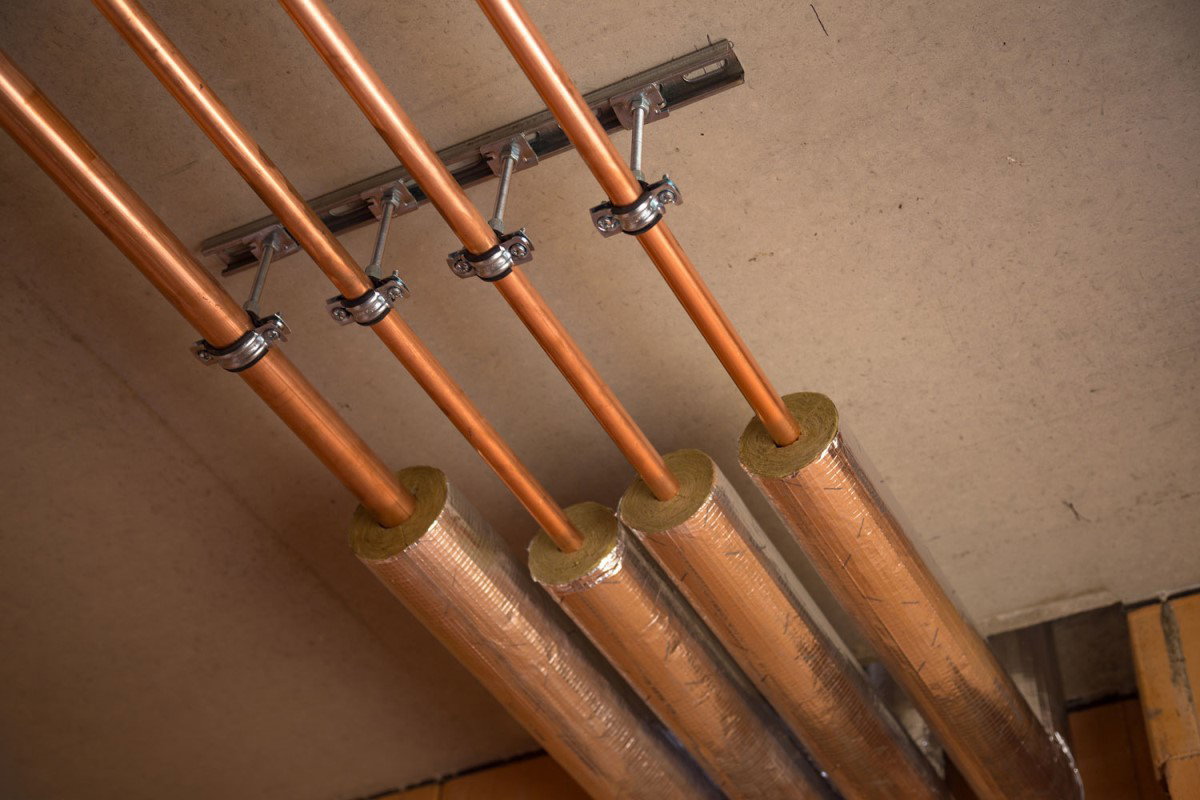
Pipe insulation plays an important role in maintaining the effectiveness and efficiency of heating and cooling systems. It is essential to choose the right pipe insulation thickness for a given application to ensure that it performs as desired. This article will provide an overview of the factors to consider when choosing the right pipe insulation thickness in the UK.
The UK climate is known for its wide range of temperatures, from extremes of hot to cold weather, making it necessary to select appropriate insulation for all seasons.
In addition, domestic water systems or industrial and commercial applications may require different levels of insulation depending on their operating conditions. Furthermore, there are various types of insulation materials available that offer different levels of thermal resistance and other properties such as sound absorption and fire resistance.
To ensure that all these factors are considered when selecting pipe insulation thickness, this article will provide a comprehensive overview of the key points to consider regarding what thickness pipe insulation you will need.
By understanding the relevant considerations, engineers and the layman homeowner can make an informed choice when what size pipe lagging is needed for any given application in order to help ensure the optimal cost-to-benefit ratio.
In this blog post, we will explore the factors to consider when selecting the appropriate thickness of pipe insulation in the UK, in accordance with British standards and manufacturers' guidelines.
Disclaimer
We have written this article to assist the general public and tradesmen who may not know the appropriate thicknesses to select when insulating pipework such as domestic plumbers.
The advice given herein is general in nature and is not supposed to be a substitute for seeking professional advice from manufacturers, consultants or referring to official guidelines such as those from British Standards.
We accept no responsibility for the incorrect thickness of insulation being selected and installed, it is the responsibility of the specifier and installer to make sure they are installing the correct thickness, material and cladding as per BS5422 or any other building regulation requirements.
Please be aware that if you are reading this article elsewhere outside of the UK, the advice, in general, will hold good but the specific thicknesses and materials required when insulating pipes will be set out in official government guidelines in your jurisdiction (ASHRAE in the US for example).
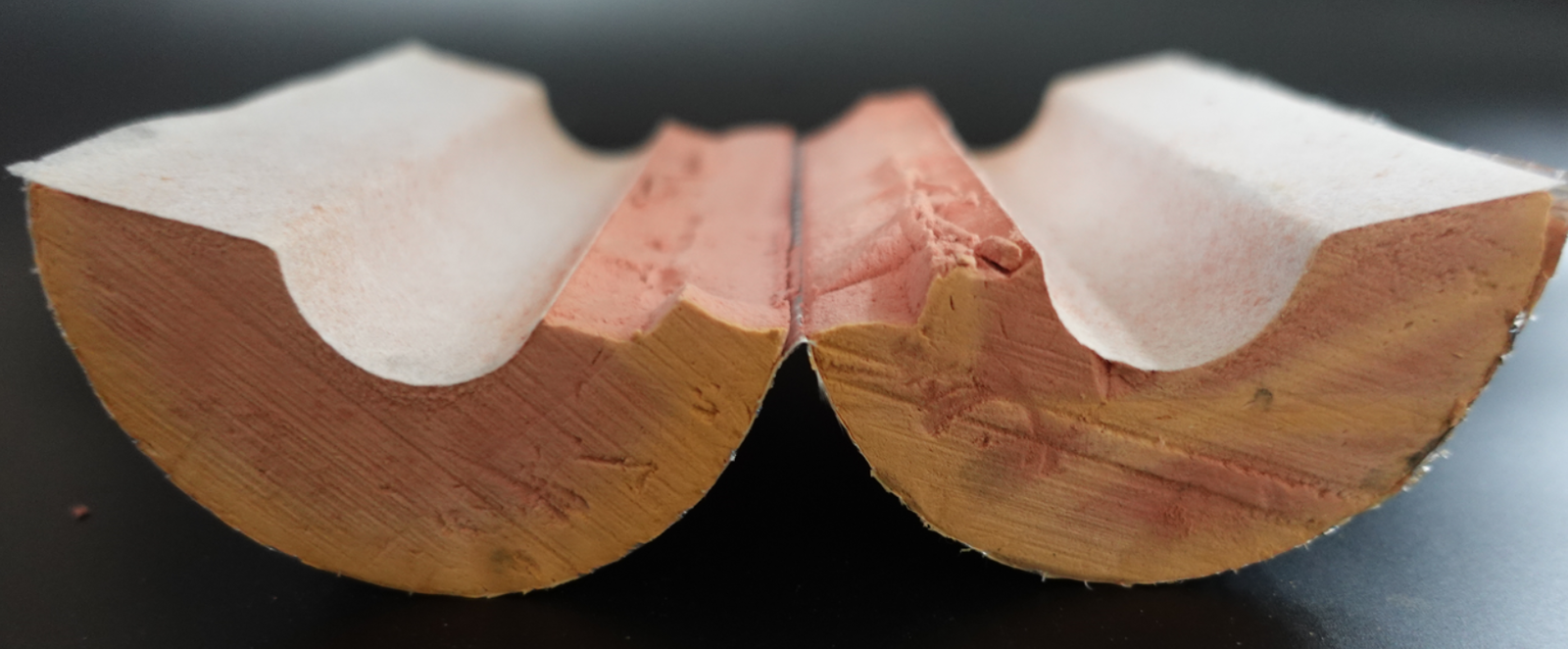
All about Pipe Insulation Thicknesses - The Basics
It's probably obvious to most that, the thicker the insulation, the better the thermal insulation. So more is better right?
Well, thicker insulation can also be more expensive and difficult to install. The laws of diminishing returns also make it less efficient to install pipe insulation that is thicker than what has been established as optimal in controlled tests in a laboratory
It is important to strike a balance between cost, practicality and performance when selecting pipe insulation thickness in order to ensure that it is a) practical and b) financially feasible.
We will go into how is pipe insulation measured, why we shouldn't choose pipe lagging that's too thin and also the impracticalities of pipe lagging which is too thick amongst other things so let's get into the thick of it (no pun intended).
What do we mean when we say pipe insulation thickness?
The wall thickness refers to how much insulation the product has. For example, if your pipe lagging is said to be 25mm thick, it means it has 25mm of insulation on both sides of the opening which will envelop the pipe.
In the image below you can see that the tape measure is showing that the thickness of the insulation is 30mm thick.
Choosing the correct pipe insulation largely depends on the wall thickness. The insulation must be thick enough to give you the results you are looking for, but too thick insulation will not fit well around the pipe.
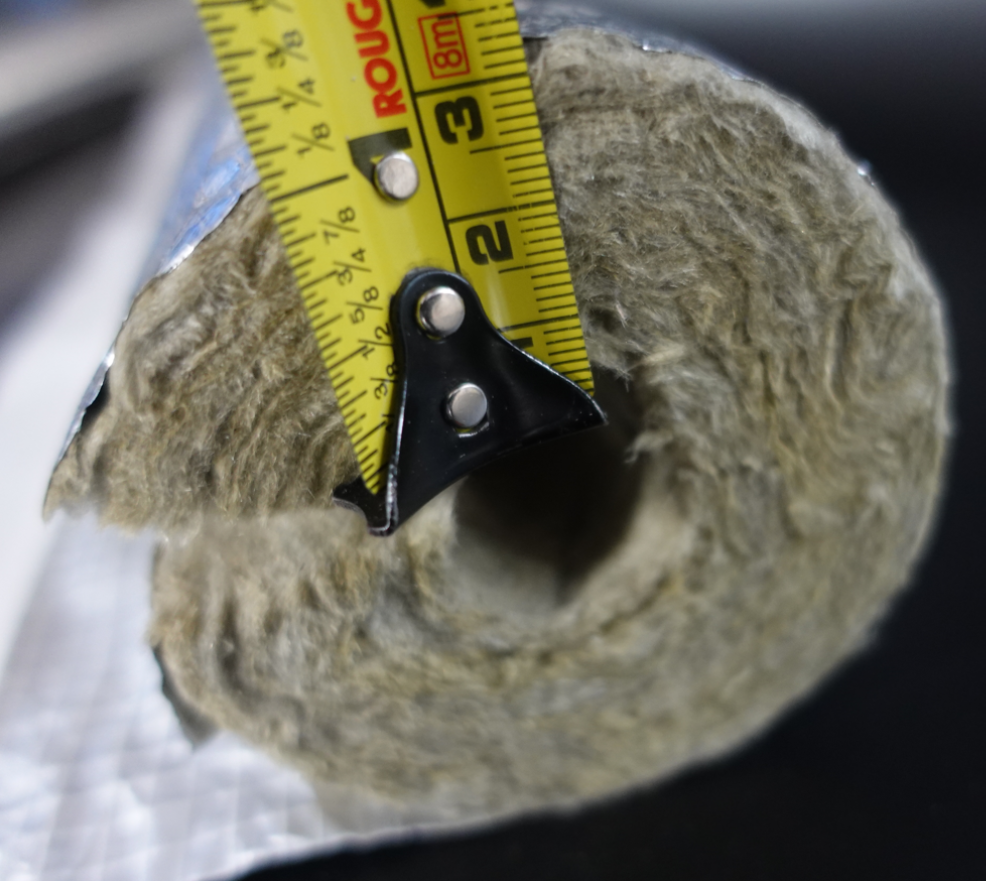 Insulation with a greater wall thickness generally has better thermal properties than those with a thinner wall. It is also important to ensure that any gaps between sections of insulation are closed up in order to maintain optimal performance.
Insulation with a greater wall thickness generally has better thermal properties than those with a thinner wall. It is also important to ensure that any gaps between sections of insulation are closed up in order to maintain optimal performance.
A simple rule of thumb is that the bigger the pipe, the thicker the insulation needs to be because the pipe has a larger surface area and thus loses heat faster. For frost protection, however, the equation is reversed. The smaller the pipe, the thicker the insulation you need because a smaller volume of water freezes more quickly.
10 Deciding Factors
There are 10 reasons and considerations when selecting the appropriate thickness of pipe insulation for your intended application.
These are;
- Is the building and application in question domestic or non-domestic?
- The material of the pipe insulation: Different materials of pipe insulation have different thermal properties, which can affect the required thickness of insulation. For example, some materials may provide better insulation than others at a lower thickness, or may be more suitable for certain temperatures or environments.
- The temperature of the fluid being carried: The higher or lower the temperature of the fluid beyond the ambient temperature of the surrounding environment, the thicker the insulation needs to be.
- The size of the pipework: Larger pipes generally require thicker insulation to reduce heat loss because they have a larger surface area.
- The material the pipe is made from: Similarly, certain materials, such as metal, are better conductors of heat and therefore require thicker insulation to combat heat loss than say plastic for example.
- The emissivity of the pipe lagging and the pipe itself. How well does the pipe/pipe lagging reflect or absorb heat?
- The ambient temperature of the environment: The insulation thickness needs to be adjusted based on the ambient temperature of the environment in which the pipe is installed. For example, pipes located externally in a colder environment or climate will require thicker insulation to prevent freezing and heat loss than ones in a milder climate.
- Space around the pipes is also another determining factor. If you don't have much space, you can't use the proposed thicknesses in BS5422 as this would mean removing all the pipework and reinstalling it, which in 99% of cases is not feasible due to the cost and disruption it would cause.
- Your budget; Some people or projects just may not have the budget to buy more expensive insulation so in this case budgetary requirements need to be factored in.
- Finally, one which people forget, what is the main purpose of the insulation? Is it thermal, acoustic or fire rating performance which is most important? Or maybe a mixture of all three?
Let's talk about each of these in more detail.
1. Is it Domestic or Commercial / Industrial pipework we are talking about?
In the UK, there are different guidelines for water pipe insulation thickness depending on whether the pipe work is located in domestic properties or non-domestic properties such as commercial and industrial buildings. Examples of commercial and industrial could include anything from a supermarket to a factory involved in heavy industry.
The requirements for pipe insulation on residential buildings are much less stringent than commercial and industrial buildings which have much more onerous obligations for the specifier and installer of the pipe insulation.
This probably has something to do with the fact that there is less space to install pipe insulation on residential properties where pipework is usually clipped onto joists, underfloor boards etc where space is tight. I suspect also it is to help keep costs down for homeowners to pay to have their pipes insulated due to less material and labour expenses incurred.
Finally, industrial and commercial properties consume far more energy than the average household so it makes sense to require thicker insulation on pipes to save on energy consumed.
The UK Building Regulations Approved Document L (2010) provides guidance on necessary insulation thicknesses for pipes in residential buildings. However, this is just a very brief overview of what's actually required and it's much better to refer to BS5422, itself referred to multiple times in Document L.
This is evidenced in the screenshots you will see in a moment from document L, which summarises the requirements stated in BS5422. The fact that document L refers the reader back to BS5422, makes it clear that we can pretty much find everything we need to know about pipe lagging thicknesses in BS5422 itself.
What is BS5422?
BS5422 specifies the requirements for thermal insulation materials used on pipes, tanks, vessels, ductwork, and equipment in specified applications and conditions ranging from -40°C to 700°C. It includes pipe insulation thickness charts UK and is meant to be used by designers, specifiers, contractors, and manufacturers of thermal insulation.
Although it is more than just a pipe insulation thickness guide, BS5422 contains plenty of charts to help determine how thick should pipe insulation be.
What does Approved Document L state?
Pipe and duct insulation is addressed in section 4 of ADL Volume 2 under the heading of "Limiting heat losses and gains from building services." BS 5422 is referenced as the standard, but there are separate tables for minimum thicknesses for hot water, heating, and ductwork.
Although these tables align with BS 5422, there are some differences, such as the minimum thickness for phenolic insulation for a 40mm hot water pipe, which is stated as 25mm in ADL, but 20mm in BS 5422.
The differences between ADL and BS 5422 highlight a disconnect between industry working groups and government standard-setting bodies.
It must be said though that the purpose of document L is not solely for describing the right pipe insulation thickness requirements in particular, but sets standards for the conservation of fuel and power in new buildings and those undergoing major renovations.
It is much broader in scope and encompasses far more subjects and topics surrounding energy conservation than just pipe insulation whereas BS5422 is solely concerned with H&V insulation, and pipe lagging thickness makes up a large portion of it.
Whilst it is beyond the scope of this article to delve into every single factor regarding pipe insulation thicknesses, BS5422 is the definitive, go-to resource that should be consulted before and over anything else when specifying pipe lagging wall thickness.
With a new version of BS 5422 soon to be released, it's important for contractors installing pipe insulation whether that be thermal insulation contractors or plumbers, to check when the new guidance is released that they are complying with the new requirements.
Note that BS5422 does not cover underground pipe insulation thicknesses.
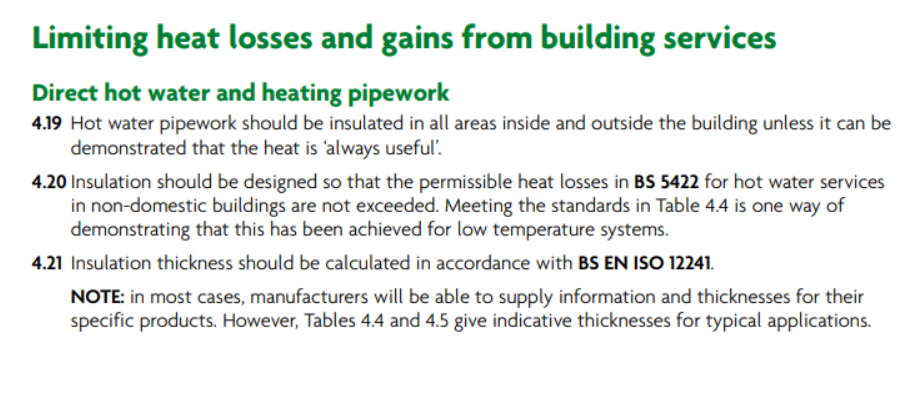
Tables below for Non-Domestic Buildings, Not Residential Dwellings.
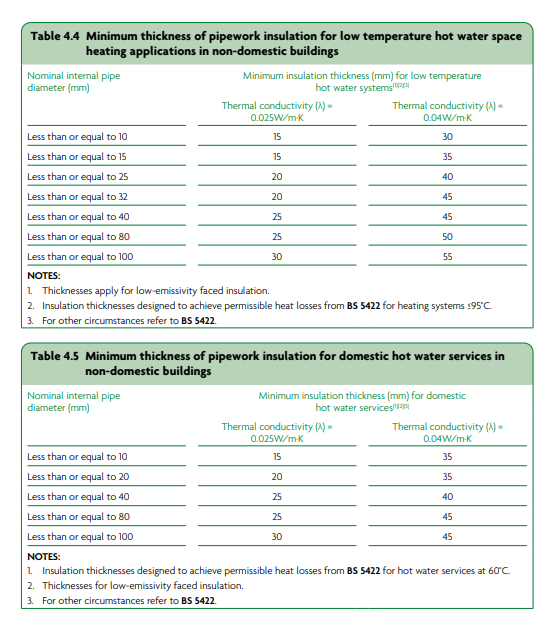
Source: https://www.gov.uk/government/publications/conservation-of-fuel-and-power-approved-document-l
2. Different Pipe Insulation Materials Have Differing Thermal Properties
When determining the right pipe insulation thickness for a project, several factors must be taken into account. One of these is the type of material used to insulate the pipes. Different materials have different thermal properties which can affect their effectiveness as insulation when exposed to temperature changes.
The thermal conductivity of the insulation is known as the Llambda / K value and is expressed in watts per metre, or W/(m · K)
The K value is a measure of the thermal conductivity of an insulation material. It is a ratio of the rate of heat transfer through the material to the temperature difference on either side of it. The lower the K value, the better the insulation material is at preventing heat transfer.
This is converse to R-Value, where a higher number means better insulation, however, R-Value is rarely used in the UK to measure pipe insulation performance.
The K value of a material can be determined through laboratory testing and is often used to compare the thermal performance of different insulation materials. Manufacturers will have conducted these tests which are verified by third parties, which allows us to know their K Value.
The most common types of pipe insulation include polyethylene, fibreglass, and elastomeric rubbers. Polyethylene is lightweight and provides good insulation in colder temperatures, but does not fare as well in hotter climates.
Fibreglass pipe insulation is a more durable material and has greater resistance to temperature changes than polyethylene. Elastomeric rubbers are highly flexible, providing excellent insulation protection against extreme temperatures and moisture.
When selecting the appropriate pipe insulation thickness, it is important to consider the declared thermal conductivity of each material from the manufacturer's literature such as data sheets. Depending on the application and external conditions, one type may be more suitable than another for the application.
3. What Is the Temperature Of the Water Inside The Pipe?
The thickness of pipe insulation is an important factor in the effective and efficient functioning of a pipe system, particularly in the UK. It is essential to consider what temperature of water is being used inside the pipe when selecting the appropriate insulation material and thickness.
The temperature of the water determines how much heat is conducted through the pipe's outer surface, resulting in wasted energy. There are multiple different service temperatures that are common such as;
- Heating Water Pipes are used for space heating to fill radiators and underfloor heating systems.
Central Heating pipes usually run at a service temperature between 60 to 80 degrees Celsius, depending on the type of material they are made out of. Copper pipes typically run at the lower end of this temperature range, while steel pipes usually run at the higher end as seen on commercial buildings. The best pipe insulation for heating pipes is phenolic foam as it prevents the most heat loss of all the common pipe lagging options.
- Refrigerant and Chilled water pipes are used in a wide variety of industrial, commercial, and residential applications. It is commonly used for cooling computers, air conditioning systems, food processing equipment, ice rinks, and refrigeration systems.
Chilled water systems usually operate at service temperatures of 5 - 10 degrees celsius. The closed-cell nature of Nitrile Rubber makes it an ideal candidate for use as chilled water pipe insulation.
Nitrile rubber has excellent resistance to water and a built in vapour barrier, making it an ideal choice for protecting pipes from condensation buildup, a particular concern with chilled water pipes. In addition, its low thermal conductivity means that it will not absorb or transmit heat, keeping the chilled water at the desired temperature.
-
Domestic Water Services - Hot and Cold Drinkable Water are commonly known as domestics. They are the pipes you feed your sinks, baths, showers and toilets
Cold Domestic water pipes are generally kept at a temperature of between 10 and 15 degrees Celsius (50 to 60 degrees Fahrenheit) Hot water pipes are usually kept at around 60 degrees celsius (140 Fahrenheit). These temperatures are optimal for providing hot and cold water to your sinks, baths and showers. Mineral wool pipe insulation such as fibreglass and rockwool are great for domestic water pipe insulation.
4. Pipe Volume or Bore Size
Pipe or Bore size is a major factor when determining how thick pipe insulation should be. Bore size refers to the diameter of the cavity in the centre of the pipe lagging which will accommodate the actual pipe itself.
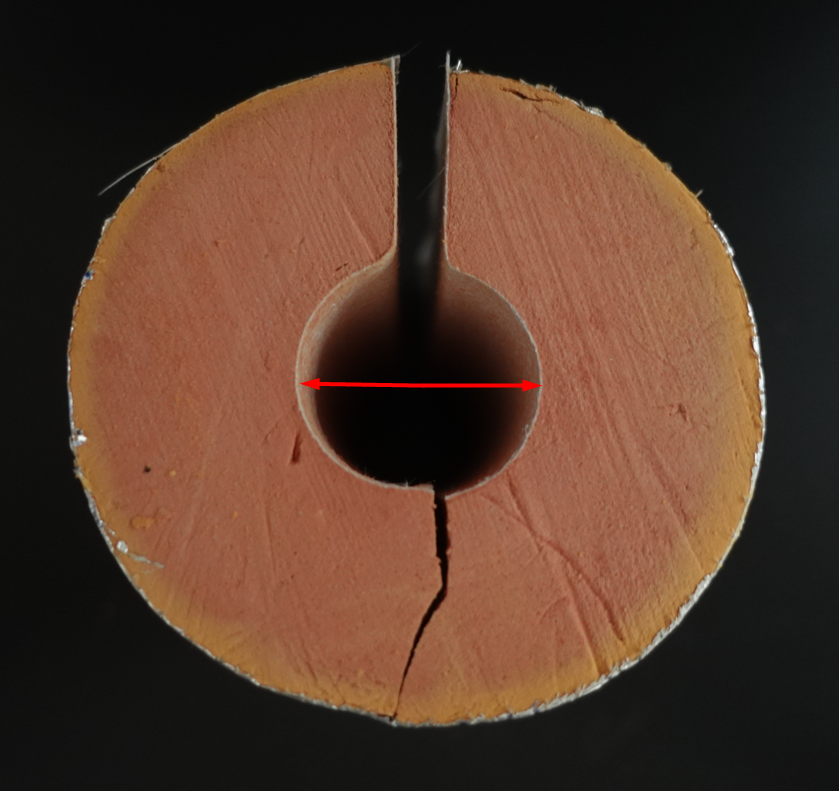 The image to the right, shows the bore size in the middle, with red arrows illustrating the diameter, in this case, 28mm.
The image to the right, shows the bore size in the middle, with red arrows illustrating the diameter, in this case, 28mm.
Pipe Insulation Sizes Explained
When ordering pipe lagging you need to know your pipe sizes.
Here's a quick explanation of how to measure the diameter of pipes.
There are 2 ways to measure the diameter of a pipe, you will need to use a tape measure.
No1 is to simply measure the outside width of the pipe from one end to the other. This will give you the diameter of the pipe. If you need an even more precise measurement, you can use a pair of callipers to measure the width, then measure the gap in the callipers with a tape measure or ruler.
If you're still struggling with this method you can measure the outside circumference of the pipe.
Use a flexible tape measure and wrap it around the outside of the pipe to determine its circumference.
Then use an online calculator (such as this one: http://www.calculator-online.net/circle-calculator) to calculate and convert your circumference measurements into diameter. Simply input your circumference measurement into the calculator and it will output the corresponding diameter in inches or mm, depending on what units you used for your measurements.
When looking at the pipe insulation thickness charts on BS5422 or Manufacturer Data Sheets, you need to realise that sometimes you may see the internal bore size or the nominal bore size (NB). We are not concerned with this though, we need to know the outside diameter or OD.
The outside pipe diameter is measured across the pipe from side to side, in inches or millimetres, although in the UK it's usually only Steel pipework which is expressed in inches as copper is always expressed in millimetres.
For example, a 15mm steel pipe is not actually 15mm outside diameter but roughly 22mm, because steel pipe sizes are given using the nominal bore size.
It can be quite confusing for the layman but as long as the outside diameter of the pipe is measured, which is all you can do once the pipe is installed anyway, then that is the pipe lagging size you require.
5. What Type Of Pipe Is Being Insulated?
When determining how thick pipe insulation should be, it is important to consider what type of pipe is being insulated i.e what is the actual pipe itself made out of?
Different types of pipes require different insulation thicknesses in order to effectively provide energy efficiency and cost savings. The type of pipe that is being insulated determines the recommended thickness which will be dependent on the environment and application.
The most common types of pipes that are insulated include copper, steel PVC, PEX, PE-RT. Each of these types of pipes will have different requirements in terms of insulation thickness due to their structure and material properties.
Copper pipes typically require thicker insulation than other types due to their higher thermal conductivity, while PVC, PEX and PE-RT pipes typically require thinner insulation as plastic is less thermally conductive than copper.
6. How does the emissivity of the surface of a pipe and the pipe lagging affect heat loss?
The emissivity of the surface of a pipe plays an important role in determining its heat loss. The emissivity of a material is a measure of its ability to radiate energy in the form of infrared radiation. Materials with higher emissivity are able to absorb and emit more infrared radiation, and therefore dissipate more heat.
Conversely, materials with lower emissivity i.e more reflective, are less efficient at absorbing and radiating heat.
Therefore, the emissivity of the surface of a pipe can affect heat loss by either increasing or decreasing the amount of heat that is either absorbed and then dissipated via convection and conduction or radiated away from the surface of the pipe.
In addition to the emissivity of a pipe's surface, other factors such as surface roughness cause a larger surface area to be exposed to the environment, which increases the rate of heat loss.
Examples of high emissivity surfaces would be red oxide-painted steel pipes and black foam pipe lagging like Nitrile Rubber. This would mean that more insulation thickness is required for this combination of pipe + lagging than low emissivity options.
Examples of low emissivity surfaces would be copper pipework and aluminium foil-faced pipe lagging like Kingspan Phenolic. Using this combination would mean less of the heat is being radiated away from the pipe + lagging so therefore thinner thicknesses are required than steel + armaflex for example.
7. Ambient Temperature of the Surrounding Environment
The ambient temperature of the environment in which the pipes are situated is one of the most important factors in determining pipe insulation wall thickness. As the ambient temperature increases or decreases, more insulation is typically needed to keep the temperature of the pipe within the desired operating temperature range.
For example, if the pipe runs through an area with extreme temperatures or if there is a risk of condensation forming then thicker insulation may be required to ensure adequate protection from freezing, heat loss, heat gain and to prevent pipes from sweating.
This is quite intuitive and easy to grasp for most people.
8. How much space is there around the pipe?
When selecting insulation thickness, the available space around pipes is a crucial factor. If there is limited space such as on existing pipework, using the recommended thicknesses according to BS5422 may require removing and reinstalling all pipework, which is often infeasible due to high costs, mess and disruption.
Ultimately you are governed by how much available space there is available and the amount of space around the pipe will depend on the type of pipe and the bracketry system used to install the pipework to the structure.
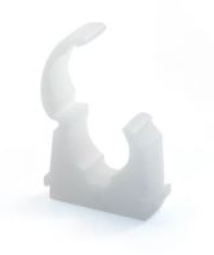 For example, these white plastic clips (Image to the left) commonly used on domestic properties leave hardly any space to fit insulation between the pipe and the structure e.g along joists in t
For example, these white plastic clips (Image to the left) commonly used on domestic properties leave hardly any space to fit insulation between the pipe and the structure e.g along joists in t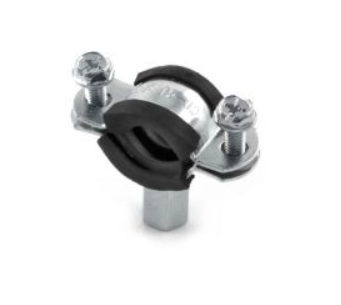 he loft space. They are a pipe laggers nightmare and I really hated insulating pipework that was installed using these as there was hardly any room to fit insulation around the pipe.
he loft space. They are a pipe laggers nightmare and I really hated insulating pipework that was installed using these as there was hardly any room to fit insulation around the pipe.
Usually, you can only fit 9mm or 12mm at best when the pipework has been fitted using these. If you're having new pipework installed then it is best to ask the plumber / pipefitter to use a bracket which allows for at least a 25mm gap between the pipe and surfaces, allowing you to get recommended thickness of lagging on the pipe.
On commercial projects, mechanical contractors are obligated to use brackets that allow for the thickness of insulation stated in the specification or by BS5422.
9. Budgetary Restraints
Some people or projects just may not have the budget to buy more expensive insulation, so budgetary requirements need to be factored in. It is obviously better to have some insulation rather than none at all.
Pipe insulation should pay for itself again and again over its life span. This is true for all insulation, not just pipe lagging.
Obviously, we advocate using BS5422 recommendations if you have the space to do so and also the budget to accommodate them. But if you simply cannot afford the thicker requirements, then buy what you can afford at least.
Now it must be clarified that I'm talking to homeowners here regarding existing pipework. New builds and refurb projects should have no excuse but to try their best to accommodate BS5422 thicknesses.
You may not get another opportunity to insulate this pipe work again so you should make the most of it and put on as much insulation as you possibly can. Your wallet will thank you over the years.
10. What is the preferred outcome of pipe insulation?
Is it thermal, acoustic or fire rating performance which is most important and how do we strike a balance between them all?
In general, the preferred outcome of pipe insulation is for thermal performance, as it helps to protect pipes from cold temperatures and conserve energy.
Acoustic performance, fire rating performance, and other considerations should all be taken into account, but thermal performance should be the priority. However, in some scenarios, the priority when insulating pipes is to protect them from fire and also to reduce noise transmission.
Striking a balance between these considerations is important to ensure that all requirements are met with the most cost-effective solution. By selecting the correct material and thickness you can address all of these concerns with one product.
Honourable Mentions
Pipe Insulation Cladding
If pipe insulation cladding is used this may affect the calculations as it adds another layer to the outside of the insulation. It will also cover up any foil facing which will of course prevent heat from being reflected away. This is not a concern for most people who install pipe insulation and could take up a whole other article on its own. BS5422 will advise the best course of action when cladding is used.
The social cost of carbon
All energy used is assumed to have not only a direct financial cost but also an indirect cost which reflects costs arising from the social implications of carbon emissions. This indirect social cost of carbon is calculated based on a standard government guideline.
Therefore if reduced carbon output is a primary concern, this may affect the thicknesses required too depending on the extent to which they need to be reduced.
So with all the above in mind, which material should I choose?
Polyethylene Foam: Armacell Tubolit PE foam pipe Insulation
Is a low-cost, energy-efficient, semi-slit product that can be used for a variety of heating and plumbing applications. With thermal conductivity as low as 0.040 W/mK @ 40°C, this flexible closed-cell polyethylene thermal pipe insulation comes in 2-meter lengths.
Hot pipes up to 105 degrees Celsius can be insulated with Nitrile rubber insulation. The insulation is quite versatile and is used in both commercial HVAC and domestic plumbing and heating applications.
Phenolic Foam : Kingspan Kooltherm Pipe Insulation
It is one of the thinnest and most efficient pipe insulation products available in the market. The closed-cell structure enables a low thermal conductivity of 0.025 W/mK which is great for energy savings.
The versatile product is used to insulate almost all types of pipe-like mild steel, stainless steel, carbon steel, copper, and plastic. Phenolic can be used in temperatures ranging from -50 to +120 degrees Celsius, so it cannot be used on steam lines for example. It has many industrial and HVAC applications as pipe insulation.
Stone wool: Rockwool stone wool pipe insulation
As pre-formed sections, Rockwool stone wool pipe insulation features a one-piece aluminium foil jacket and integral self-adhesive lap. It makes installation quick and simple; just snap the parts onto the pipe, take off the backing tape, and smooth down for a secure seal.
Thermal conductivity wise it performs better than Nitrile and Polyethelene, slightly worse than glass wool and nowhere near as good as phenolic in this regard.
Where Rockwool has a clear advantage over phenolic though is its acoustic performance and its ability to resist temperatures of up to 700°C, making it the ideal choice for pipe insulation when fire safety is a top priority. It is ideal for HVAC and industrial applications.
Glass Wool: Isover ClimPipe
A good allrounder. Performs well on all fronts, thermal and acoustic insulation whilst also being affordable. It's quick to install thanks to its soft, semi malleable nature and self-adhesive lap.
These sections are manufactured in lengths of 1.2m which means more pipe is insulated with each section, resulting in fewer joints and less thermal bridging.
They are ideal for heating and hot water pipe insulation. The consistent density ensures optimal thermal performance. Fibreglass pipe insulation also helps in a significant reduction of noise levels for wastewater pipes and can withstand high temperatures but not as high as stonewool.
Nitrile Rubber: K-Flex
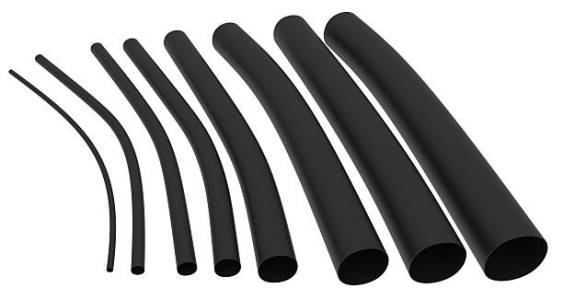
The first image that comes to mind when thinking of pipe insulation is probably black foam lagging like the one pictured above. You may not know the name of it, so it's referred to as just that, 'black foam pipe lagging'. However, the technical term is actually Elastomeric Nitrile Rubber.
Nitrile pipe insulation is effective at minimising energy loss and provides consistent condensation protection so its used extensively on air conditioning pipes where condensation is a concern. The product is manufactured in a 2m length - unsplit tube, a pre-slit self-adhesive tube or as a sheet.
Nitrile rubber pipe section can be used on hot pipes up to 105 degrees Celsius. Nitrile rubber pipe insulation is available in thicknesses from 9mm to 25mm, although it's usually only found off the shelf at thicknesses 9mm and 13mm.
Its extremely common on domestic properties and is favoured by plumbers due to its easy-to-install, flexible nature alongside it being available in the thinnest thickness amongst all of the above options, 9mm, so it's great for use in tight spaces and when tight fitting brackets are used.
Frequently Asked Questions
How to measure for pipe insulation thickness?
First of all, decide on which material you will be using. Then consider all the 10 points mentioned previously. If you are still happy with the material you have chosen, then check out its declared thermal conductivity which can be found in the datasheet.
Then either try and find the chart on google for the application for which it is needed and that particular pipe lagging material eg - Central Heating Pipe insulated with Nitrile Rubber and follow the thicknesses given for the pipe insulation dimensions
If you struggling you can contact us here at Buy Insulation Online and we will advise as best we can or put you in touch with a manufacturer representative.
How do you calculate pipework insulation thickness?
To determine the required thickness of pipe insulation, your going to need to use some mathematics equations. If that's not your thing, which would be most of us, then BS5422 is your best friend as they have done all these calculations for you.
Calculation methods in accordance with BS EN ISO 12241:1998 can be used to ensure that the thickness selected is appropriate.
If you want to go ahead and calculate yourself, you'll need to take into account the following factors:
-
Operating temperature: The operating temperature of the pipe affects the required insulation thickness. Higher temperatures require thicker insulation to prevent heat loss.
-
Heat transfer rate: The heat transfer rate, measured in watts per meter kelvin, determines the amount of heat that is lost from the pipe to the surrounding environment.
-
Insulation material: Different insulation materials have different thermal conductivity values, measured in watts per meter kelvin. The required insulation thickness will depend on the thermal conductivity of the chosen insulation material.
-
Pipe diameter: The diameter of the pipe affects the amount of surface area that is exposed to the surrounding environment, which in turn affects the heat transfer rate.
To calculate the required insulation thickness, you can use the following formula:
Thickness = (Heat Transfer Rate * Time) / (2 * Pi * Pipe Surface Area * (Operating Temperature - Ambient Temperature) / Thermal Conductivity)
It is recommended to consult with a professional engineer or insulation specialist to determine the exact insulation thickness required for your specific application, as there are many factors that can impact the calculation as mentioned previously.
What is the most efficient pipe insulation?
That's a pretty broad question and there is no one right answer. However, we can say a prime candidate for the most thermally efficient pipe lagging would be Phenolic foam such as Kingspan Kooltherm. Phenolic represents the most efficient pipe insulation if it's based on thermal conductivity vs overall thickness alone.
Phenolic foam has a very low thermal conductivity (0.025 W/mK) which means it is the most effective at blocking heat transfer, so you can get away with using thinner thicknesses than mineral wool or nitrile rubber for example.
The image below is from Kingspans own literature which illustrates how efficient phenolic is compared to its peers.
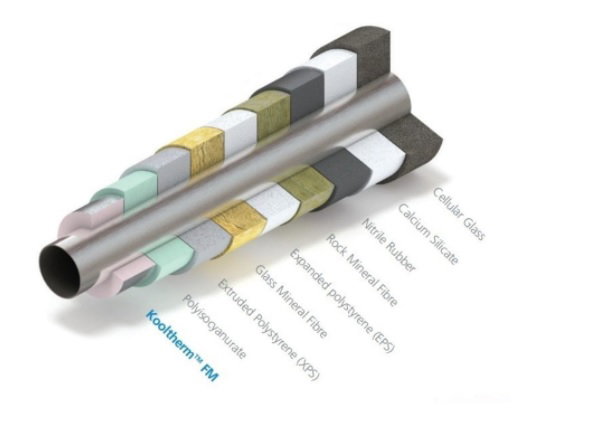
What is the thickest pipe insulation?
The thickest pipe insulation you can get readily available off the shelf is 50mm thick although special requests can be made for insulation as thick as 70 to 100mm however there will probably be a long lead time and a minimum order amount when it comes to buying insulation as thick as this. It certainly will not be cheap either!
How thick should insulation be to stop pipes from freezing?
Insulation alone cannot guarantee complete protection against the freezing of water in pipes under all circumstances. If the ambient temperature stays low enough, for an extended period and the water flow in the pipe is slow or stagnant, no amount of insulation will prevent the water from freezing.
However, insulation does slow down the cooling process and delay the onset of freezing, potentially avoiding ice formation if the water is not stagnant for too long or if more heat is supplied to the system than is lost through the insulation, metal supports, and hangers. Supplementary heating, even in specific areas, can also help.
Its important to keep in mind that a) the smaller the pipe and b) the cooler the contents of the pipe, will need more insulation than larger, warmer pipes. For example, a 15mm cold water pipe that runs through a garage would need more insulation than a 35mm heating pipe.
For smaller pipes, it may not be possible to install enough thermal insulation to fully prevent ice formation during sub-zero temperatures overnight due to practical limitations.
When the recommended insulation thickness in the tables is not feasible, alternative methods such as trace heating, installing larger bore pipework, the addition of glycol to heating pipes (never to drinking water!), drain-down, frost-stats, or increased water-flow should be used in isolation or in combination to supplement the reduced insulation and ensure protection against freezing.
What thickness pipe insulation do I need to prevent frozen pipes?
Its not possible to give a one size fits all thickness to prevent frozen pipes. It's also not possible to do this with just pipe insulation alone in extended periods of sub-zero temperatures. However, as a very general guide, you are probably going to need at least 50mm of mineral wool insulation or 30mm phenolic to have a fighting chance of preventing frost from forming in pipes.
On their own, Nitrile rubber or polyethene are ineffective in preventing frozen pipes as they can only be bought up to 25mm thick. With the help of heat trace cable though you may be able to use them as directed by BS5422.
See our blog on Why pipe insulation in loft areas is a must where we discuss how to prevent frozen pipes in more detail.
What Is The Most Cost-Effective Thermal Insulation Material?
There is no right answer to this but when it comes to pure thermal insulation and no other considerations such as acoustic performance are needed, then because the price of pipe insulation is heavily determined by how thick it is, then phenolic foam insulation is probably the most cost-effective on smaller bore pipe work from 15MM (1/2 inch) up to approximately 60mm (2 inch).
The choice of phenolic as pipe insulation is driven by its ability to provide efficient insulation at thinner layers, making it cost-effective. This is because phenolic at thin thicknesses is cheaper compared to thicker layers required by other materials, such as nitrile rubber, to achieve the same level of insulation.
However, once phenolic foam is required to go beyond 25 millimetres thick, it becomes quite expensive to manufacture and get hold of because those sizes are not off the shelf and require to be manufactured especially (usually with a minimum order amount too). Therefore, on larger bore pipe work, mineral wool such as Rockwool or Fibreglass might be more economical in my experience.
So if a commercial project is made up mostly of large bore pipework then mineral might be the way to go. Conversely, if it's mostly small bore pipework, phenolic foam would probably be cheaper. This is a general observation and is not a hard or fast rule.
On domestic properties, Phenolic foam should be used if there is new pipework going in such as on a new build.
If the pipework is existing in situ with no allowance for any more than 13mm, then you only have a choice between Polyethelene or Nitrile rubber anyway which are both the cheapest of all the pipe insulation materials, nitrile being slightly better than PE in most aspects.
Is There A Minimum Recommended Thickness For Pipe Insulation?
A general, all-encompassing, minimum thickness for pipe insulation does not exist.
It depends on too many variables such as the temperature of the fluid running through the pipes, pipe size, the type of insulation material used, and the ambient temperature of the environment surrounding the pipes to name just a few.
However, as a quick reference, if you were to go with the following thicknesses on 15mm to 28mm, internal heating / hot water copper pipework only for example, you should be within BS5422 but it's still your responsibility to check what BS5422 states -
Polyethelene (eg - Tubolit) - 25mm thick (Will be less on plastic pipework, approx 19mm)
Nitrile Rubber (eg - Armaflex) - 25mm thick (Will be less on plastic pipework approx 19mm)
Phenolic (eg - Kingspan) - 15mm thick
Mineral Wool (eg - Rockwool) - 20mm thick
Glass Wool (eg - Isover) - 20mm thick
Based on the above, the average thickness hovers around the 20mm thickness mark for domestic properties. For non-domestic properties, these thicknesses will be higher.
Table 19 from BS5422:2009 shows 'Indicative thickness of insulation for domestic heating and hot water systems having low
emissivity outer surfaces', meaning those with reflective surfaces like copper and aluminium foil facing.
The blue box indicates thicknesses recommended using Phenolic and the red box for thicknesses using Mineral Wool or Nitrile Rubber. As you can see only 15mm phenolic is required for all standard sizes found in a domestic home.
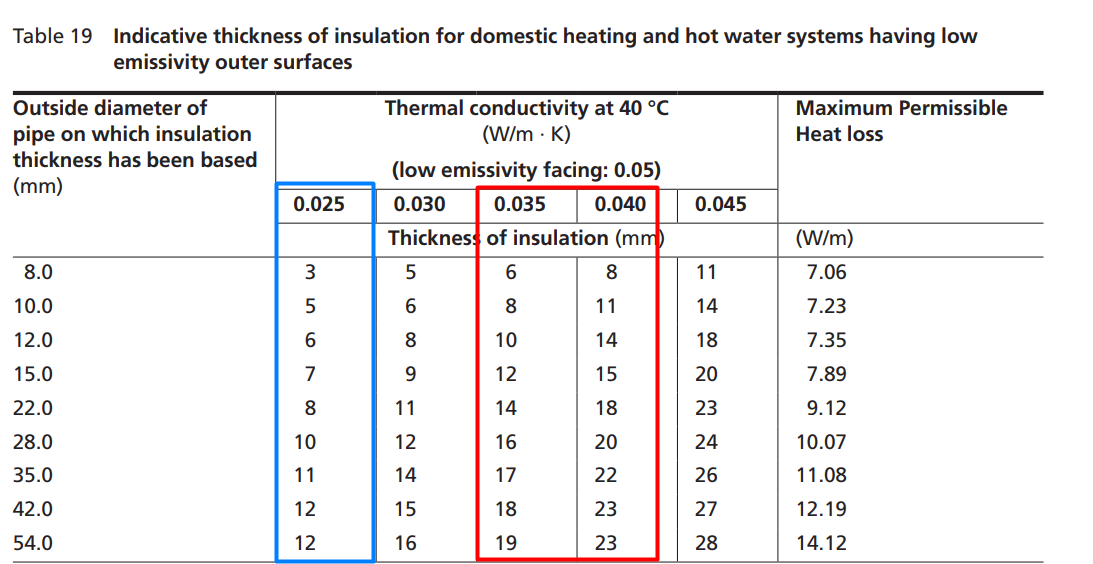
Does pipe insulation need to be tight?
Yes, pipe insulation needs to be tight and sealed properly in order to prevent air leaks and ensure that the insulation is effective.
It is important to accurately measure the pipe size before selecting an appropriate insulation thickness and material. The right combination will ensure that energy loss is kept to a minimum while avoiding any potential installation problems caused by overly tight fits.
Measure the diameter of your pipe correctly and determine the thickness of insulation you need before you buy pipe insulation online or visit your local vendor.
However, the pipe insulation you choose should not be too small for the pipe you want to insulate. Go up one size if in doubt.
A little additional space is ok, but if the insulation you choose is a size too small or too tight, it will either not envelope the pipe entirely or it can come open even if you use adhesive or tape to close it.
In Conclusion:
The selection of an appropriate pipe insulation thickness is an important part of ensuring effective and energy-efficient heating and cooling systems which help keep running costs to a minimum.
There are a variety of choices available for you to insulate your pipes. Look into your options and choose one that meets your needs. As mentioned before, insulating your pipes can yield many benefits. It also saves on installation charges if you are an efficient DIYer.
For the best pipe lagging money can buy and other insulation essentials, you have come to the right place. Visit our pipe insulation section here www.buyinsulationonline.co.uk/category/hvac-insulation/pipe-section
We offer quality insulation at the lowest possible prices from some of the UK’s leading brands. Our knowledge is unrivalled in the UK when it comes to pipe lagging so if you need more help contact us at enquiries@buyinsulationonline.co.uk or 03303130245 and we'd be happy to assist you.

Samuel Hitch
Managing Director
Buy Insulation Online.
Leave A Reply
Your feedback is greatly appreciated, please comment on our content below. Your email address will not be published. Required fields are marked *
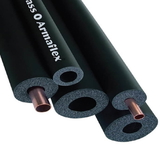
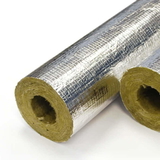
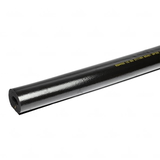
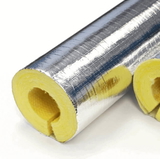
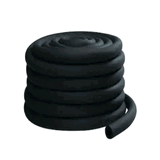
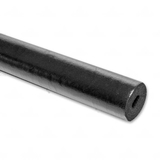
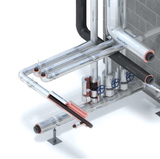
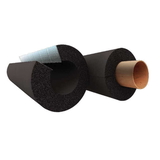
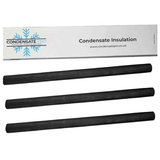
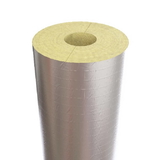
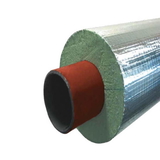
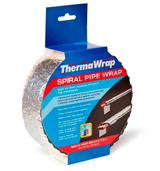


































































































































































































































































































































































1 Comments
William warnock
Very interesting and good article, coincidently my daughter bought a house in Banbury recently and I was over doing work at it and discovered none of the pipe below the timber ground floor were insulated.